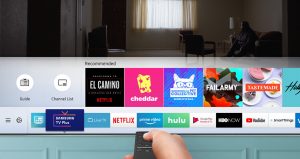
After more than 40 years of operation, DTVE is closing its doors and our website will no longer be updated daily. Thank you for all of your support.
OTT churn increases in US during pandemic
 The churn rate of US OTT services increased to 41% in Q1 2020 up from 35% in Q1 2019.
The churn rate of US OTT services increased to 41% in Q1 2020 up from 35% in Q1 2019.
According to Parks Associates, an increasing number of US broadband households cancelled at least one OTT subscription in the early part of the year, with a significant number also utilising the free trials offered by streamers during the coronavirus pandemic.
More than two in five households have tried out an OTT service’s free trial during the crisis, with 8% trialling four or more.
Of households that signed up to a service during the pandemic, 49% subscribed to Disney+ and 27% subscribed to Apple TV+ – the two best performers.
The report also raises questions about whether subscribers will keep these services with shelter-in-place rules being relaxed, in spite of a growing number of COVID-19 cases in many states. It notes that maintaining subscribers may be difficult for platforms which rely on original programming – much of which will have been affected by delays to production.
Steve Nason, research director at Parks Associates, said: “We are seeing a record number of consumers experiment with new OTT services as a result of the COVID-19 crisis and the shifts in strategy in the industry.OTT services are offering extended free trials to build up engagement, and 8% of US broadband households report they have subscribed to at least one new OTT service since the COVID-19 crisis began.
“The industry is working on new hybrid content strategies as a result of production halts. Major players like AT&T for Warner Brothers and Comcast for Universal Studios are greatly concerned about the delays in content production on the launches of new services, like HBO Max and Peacock. Free trials will bring in new subscribers at the launch, and roughly seven in ten have subscribed to at least one OTT service they have trialed. OTT services need to be creative in building an engaging service, but during this time of heavy video consumption, OTT services have the opportunity like never before to win over new video consumers and retain them as long-term subscribers.”


